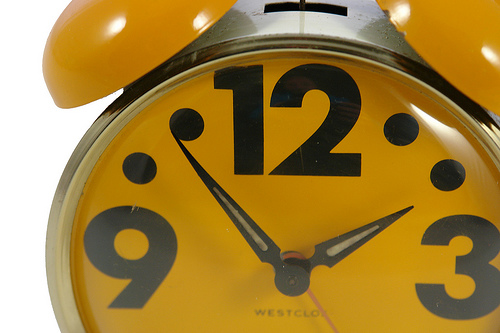
If you want to get on the fast track to remember more dreams, it’s important to start keeping a dream diary. Still, it can take a while before the dreams make it from slumberland to the waking world. The reason for this lag between intention and dream recall is that our memory system is not geared for automatic dream recall, and also because we live in a culture that does not value dreams.
In this article, I’ll get into the basics of the science behind dream recall, and provide a quick method that is great for beginners who can snatch only the flimsiest memory of their dreams: I call it the Snooze Method.
Why Dreams Are So Hard to Remember
Dreams are notoriously hard to remember. Have you ever had an amazing dream that seemed to solve all your problems? “Oh, I’ll remember it easily in the morning,” we say, and go back to sleep. And in the morning: nothing, not even a hint.
Long story short, it’s not our fault. Chiefly, we can’t remember dreams thanks to the chemistry of the brain.
It’s as if we have two memory systems in play between sleeping and waking. When we are dreaming, it is the cholinergic system that is running the show. The brain is more plastic in this state. Dreaming is the workshop of learning, a time when new synaptic connections are made. It is also the domain of short-term memory, and we ride the wave without worrying about what just happened a second before.
But as soon as we wake up, this system radically shuts down and serotonin levels rise, along with noradrenaline, bringing back the familiar waking cognition style that is more linear and logical in structure. Long-term memory consolidation happens here too. What this means is that the wonderful or disturbing dreams we just had are not easy to access, and if we don’t actively remember them, they evaporate…. like a dream.
This does not necessarily mean we are “not supposed” to remember our dreams, as some have suggested, any more than the fact that we are born naked means we are not supposed to wear clothes. Rather, cultivating dreams, like many aspects of our human knowledge base, is transferred through culture.
We can easily learn to bring more dreams back to the waking world; it’s just a matter of building bridges between the two worlds. Language is a key bridge-builder, which is why even simple dream sharing or dream journalling can increase recall. But an often-overlooked bridge-builder is the human body.
The Body is the Bridge

It blew my mind when I learned that memory traces are not just stored in the brain. We have many places in the body that process memory and emotion. The lungs, the belly, and the heart are among the largest of these body-cognition centers. There are some amazing medical anecdotes that illustrate this point, such as when patients experience rogue memories after a heart transplant operation.
Another example of the body’s memory in action is how body posture can effect our moods and disposition. Put your face in your hands and you will find something to feel sorry about. Get on your hands and knees and bow your head and you may feel gratitude course through. Our postures include memories of the last time we held that posture, and how we felt.
This is why partially why yoga is so effective at transforming people’s lives, and also why our mothers told us not to slouch. We are what we seat.
You know where I’m going with this: we can use this same natural capacity of the body to help remember our dreams too. What follows is a mish-mash of theory from Eugene Genlin and Candice Pert, and it’s personally done wonders for my dream recall.
The Snooze Method for Dream Recall
Usually, we wake up and change our body position immediately. This actually dispels the body’s emotional traces of the last dream. And it’s totally over for remembering dreams once we start thinking about the day ahead.
- Instead of changing position when you wake up tomorrow, stay put. Then try actively to recall your dreams.
- If you can’t find any dream images, focus on any emotion you may feel and sit in the feeling. Try to determine where the feeling “lives,” — is it a tightness in the chest or a glowing the belly? This is called body scanning. With practice, the dream image will come back with a flash, and sometimes an entire dream narrative will come with it.
- If you wake up by alarm, this method will still work. Hit the snooze and then move back into the same position you were in. Close your eyes. Start scanning your body for dream memories and watch what shows up in your head in terms of images and thoughts.
- If waking world worries intrude, gently remind yourself that “I don’t need to worry about that right now.” Just turn back to the dream scanning, focusing on the emotions or any dream image that you recall. You may fall back asleep, but hey — that’s why we have snooze button in the first place.
- Once you have a dream narrative, make a grab for the dream journal (which is on the bedside table, right?) The best practice is to write down the dream in as much detail as you can muster now. But if a busy morning is ahead, jot down some shorthand and revisit the notes over breakfast. Forget about the news and write down the dream instead. Honestly, the world can wait until we’ve had our coffee anyways.
Let me know how this method works for you, as well as your best practices for remembering dreams. And for more tips about how to develop your dream recall, download my free ebook.
Ryan, Thanks for the info. I will be testing the “Snooze Method” tonight/tomorrow am.
As of todays date I have made daily dream journal entries for 50 days running and have found only 7 days that I have had little or no recall. Some of my daily entries have a surprising amount of detail, and may describe 1 to 4 different dreams. My challenge is to determine what conditions allowed such detailed recall.
One of the methods I use is multiple entries. For instance, I will write down as much detail that I can recall about a dream immediately after I wake up. Once I complete that particular notation, I then go back to sleep. This pattern may repeat 2 to 4 times in one night, but I make time each morning to transcribe the notes into my journal. About every other day I will read over the last several days of journal entries to help me with recall. Additionally, about once a week I will sit down at my lap top and type my journal entries and save them as a word document. This process allows me to go over each individual dream at least 4 times. I know this takes more time than most people have, but I truly believe that the subconscious mind realizes that I am serious and, in response, helps me with my recall.
My intention with dream journaling is to achieve lucidity, and I have made progress towards that goal. Your advice to be patient and committed with intention are right on target. My entries have shown me that there is a correlation between my daily stress level and amount of recall; more stress = less recall. This makes meditation or other relaxation techniques am important part of the formula.
Thanks for all the great info on your website.
Tom, thanks for sharing; that’s a lot of discipline. I’m curious to see how this method will play out for someone who already has such high dream recall. also interesting about more stress equating to less recall. I sometimes have noticed the opposite! I wonder if different kinds of stress have varying effects. for instance, high social stress for me can increase nightmares but also more lucid dreams and sleep paralysis too.
This is a great method. When I was younger I got an idea that if I would have an automatic turning off snooze alarm I could use my alarm clock to time alarms to catch my rem-periods during early morning sleep.
This way I wouldn’t need to move a muscle for shutting down the snooze alarm and I could concentrate totally on dream recall or some lucid dreaming technique.
So I developed a LucidWeaver application for mobile phones for sound induced lucid dreaming training. Please check my website if you want to know more.
With Lucidweaver you can wake up your mind but keep your body totally relaxed. This is a perfect state to launch any lucid dreaming technique. Lucidweaver is a free software.
-Olli
Olli – excellent app! We got to get you a deal with the iphone.